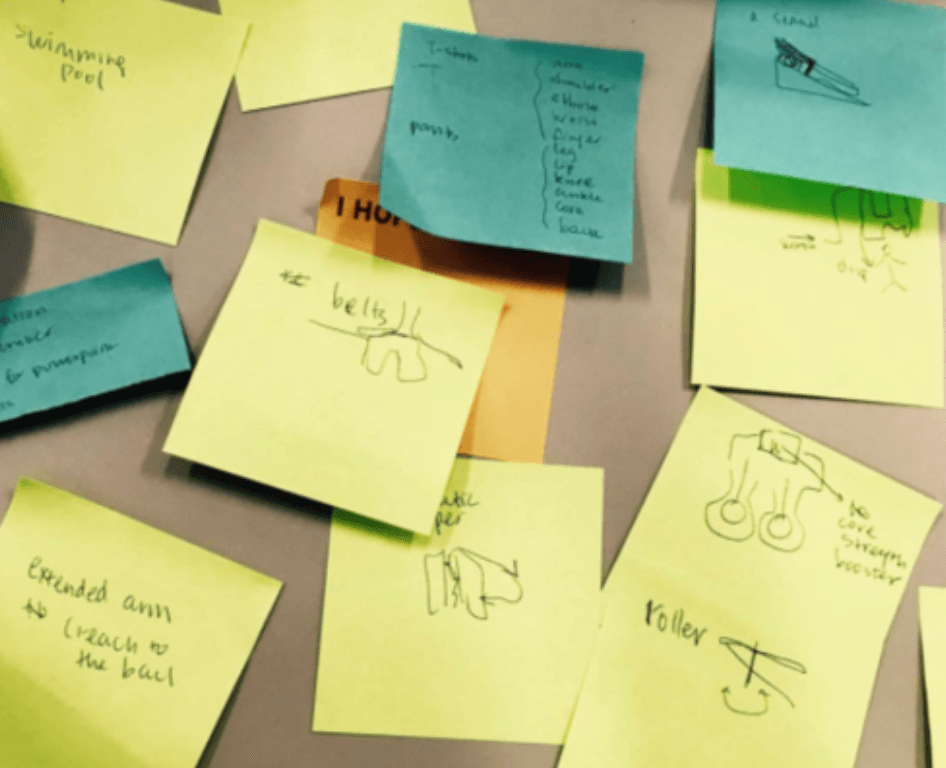What are the biggest key insights you’ve gained for your project?
Yes, we interviewed a physical therapist in the Houston medical center called Sarah Snyder! We learned from Sarah that the most common body motion issues for independent dressing include the inability to reach one’s back to grab the other side of his T-shirts/sweaters and lift up one’s bottom when pulling up pants.
What is your new HCW statement?
How can we make the daily task of dressing as normal as possible for arthrogryposis patients in hospital and home settings?
What are your hopes for your project?
We want to make sure that everyone understands the design process and contributes insights to the final prototype that helps teenagers get dressed more easily!
Design Goals
- Time
- Reduce the gap in the time it takes for a child with arthrogryposis to get dressed and the time it takes for a child without arthrogryposis to get dressed
- Independence
- A child between the age of 12 and 18 can get dressed independently without the aid of a third party
- Adjustability (long term)
- The product is generic enough that it can be minimally adjusted to apply to a wider audience
Measures of Success
- Childen/teenagers are able to dress themselves independently
- Childen/teenagers are able to reduce the time needed to dress themselves
- Childen/teenagers are able to learn to use the device with little and short instruction
- Children/teenagers are able to move around the device with normal capabilities (backpack, car, etc)
- Children/teenagers report feeling more independent in their daily dressing habits
